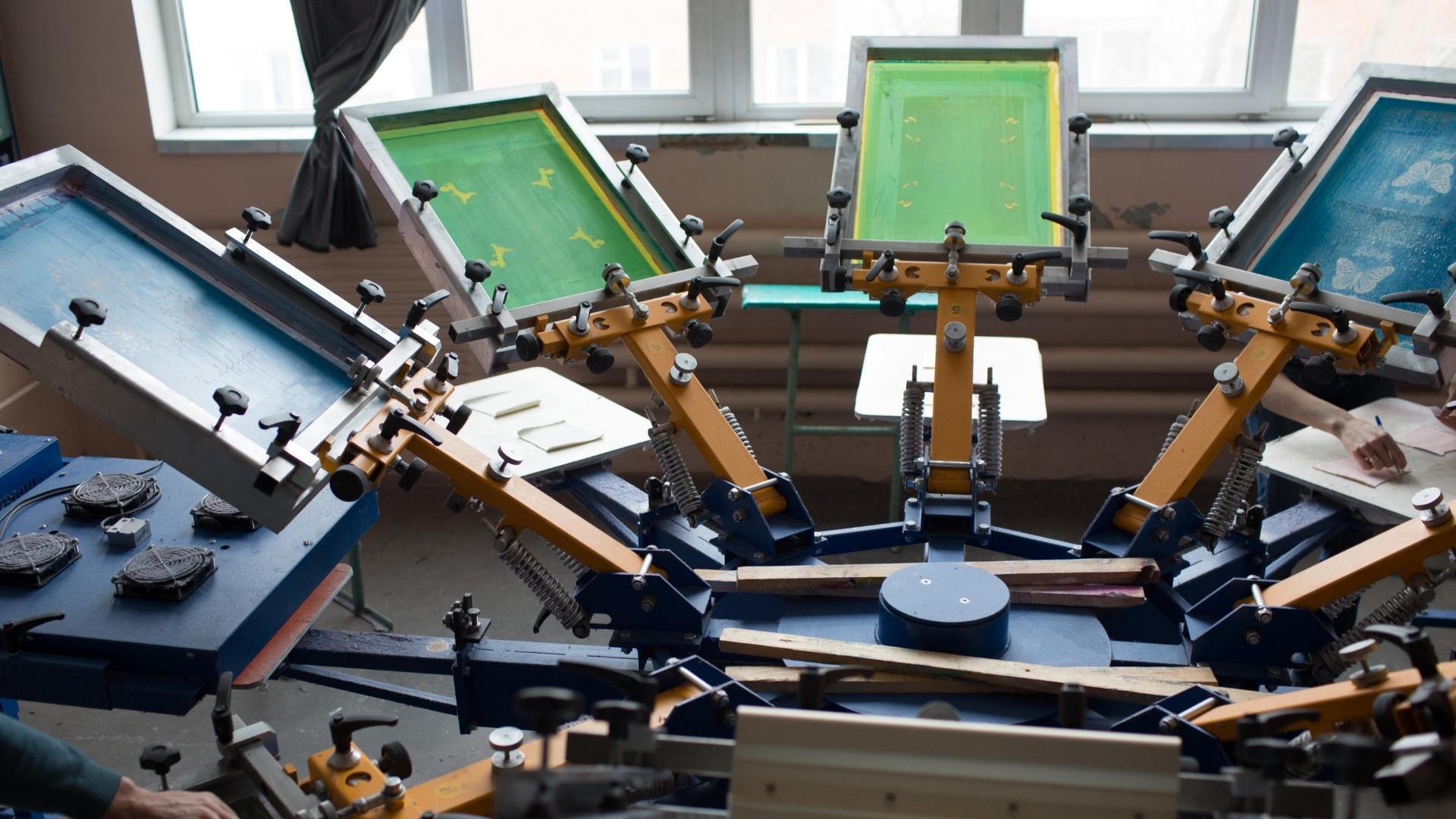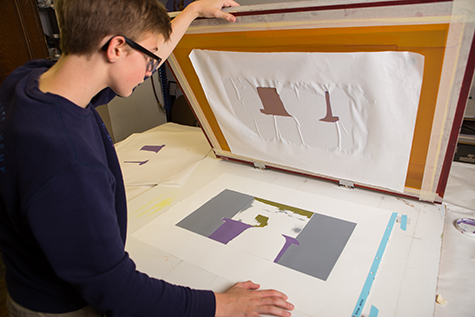The Important Overview to Comprehending Screen Printing and Its Versatile Uses
Screen printing has an abundant history that goes back to ancient times, advancing right into a sophisticated method used throughout various markets today. This guide checks out the intricacies of the screen printing procedure, describing its applications in marketing, style, and home decoration - 10:9 Design Embroidery. Understanding these basics can open imaginative potential for both industrial and imaginative jobs. The complying with areas will certainly reveal necessary ideas and strategies to boost one's screen printing endeavors
The History of Screen Printing
Screen printing has roots that trace back centuries, its evolution reflects the technological and artistic innovations of numerous societies. Stemming in old China, the strategy was originally utilized for embellishing textiles and later spread to Japan, where it became essential to Ukiyo-e woodblock printing. The method shifted to Europe in the 18th century, where it gained appeal among craftsmens and business printers. The invention of image solution in the 20th century reinvented screen printing, enabling more detailed styles and better effectiveness. Artists like Andy Warhol even more pushed its popularity, making use of the tool to create famous works that combined commercialism and great art. By the late 20th century, screen printing had actually developed itself as a flexible technique, used in fashion, advertising, and great art. Today, it proceeds to evolve, incorporating digital modern technology and broadening its applications across numerous markets.
The Screen Printing Refine Explained
Screen printing transforms imaginative visions into substantial styles through a collection of precise actions. A photo is created and after that moved onto a screen, usually made of great mesh fabric extended over a structure. A light-sensitive emulsion is related to the screen, which is revealed to light, hardening in locations not covered by the photo. After rinsing the unhardened solution, a stencil is developed.
Next off, the screen is positioned over the substratum, whether it be fabric, paper, or one more product. Ink is after that pushed with the open locations of the stencil utilizing a squeegee, transferring the layout onto the substrate below. This process can be duplicated for numerous colors, requiring separate displays for each and every hue. Finally, the printed product is healed making use of heat to guarantee the ink adheres appropriately, causing a sturdy, vibrant design on-line.
Types of Screen Printing Techniques

Additionally, specialty techniques, such as discharge screen printing, remove dye from the fabric to produce softer prints, while foil screen printing applies metallic foil to attain a glossy coating (10:9 Design contact). Each strategy supplies distinctive features, satisfying various imaginative requirements and production scales, inevitably increasing the opportunities within the screen printing domain
Applications of Screen Printing in Various Industries

Furthermore, the signage and marketing sectors make use of screen printing for developing captivating displays and banners. More Help This technique enables strong shades and elaborate layouts that capture interest. In electronic devices, screen printing is utilized for using conductive inks to motherboard, vital for part connections. Additionally, the home décor sector welcomes screen printing to produce unique layouts on fabrics and wall art. Overall, screen printing works as an important device throughout diverse fields, boosting items with personalized and visually appealing graphics.
Tips for Successful Screen Printing Projects
While embarking on a screen printing task, mindful focus to information can considerably enhance the final result. Picking high-grade products is essential; this consists of the screen, inks, and substratums. Making use of ideal mesh counts can affect ink deposition and information resolution. Prep work is just as crucial; complete cleaning of screens and proper exposure times assure crisp prints.
Next off, precise registration is essential for multi-color prints. Making use of positioning tools can help attain specific layering. In addition, screening prints on scrap materials before manufacturing assists determine potential issues without throwing away sources.

Often Asked Questions
What Products Are Ideal for Screen Printing on Material?
Cotton and polyester blends are optimal for screen printing on fabric as a result of their longevity and ink absorption. Furthermore, specialty materials like silk or canvas can produce one-of-a-kind appearances and surfaces, boosting the general design top quality.
Exactly how Do I Tidy and Maintain Screen Printing Devices?
To maintain and clean up screen printing equipment, one must frequently wash displays with appropriate solvents, check squeegees for wear, lube moving parts, and shop all items in a completely dry, dust-free environment to extend their lifespan.
What Are the Ecological Influences of Screen Printing?
Screen printing can have considerable environmental effects, consisting of chemical waste from inks and solvents, water use throughout cleaning procedures, and power consumption. Environmentally friendly products and lasting practices are necessary for minimizing these unfavorable results.
Can Screen Printing Be Done at Home Efficiently?
Screen printing can be properly done at home with the right materials and methods. Enthusiasts can develop top quality prints, though success depends on their skill degree, equipment, and understanding of the process included.
What Are the Expenses Connected With Beginning a Display Printing Organization?

Starting a screen printing business entails prices for equipment, materials, and workspace. Initial expenditures commonly vary from a couple of hundred to a number of thousand dollars, depending on the range, top quality of machinery, and desired manufacturing ability.
Screen printing has a rich history that dates back to old times, progressing into a sophisticated strategy utilized across numerous markets today. Another strategy, rotary screen printing, employs round screens, facilitating continual printing on material rolls, thereby boosting efficiency for large productions. Additionally, specialized techniques, such as discharge screen printing, get rid of dye from the textile to create softer prints, while aluminum foil screen printing applies metal foil to attain a shiny coating. In the fashion market, screen printing is widely utilized to create lively designs on clothing, enabling brand names to display their distinct designs. Cotton and polyester blends are optimal for screen printing on material due to their longevity and ink absorption.